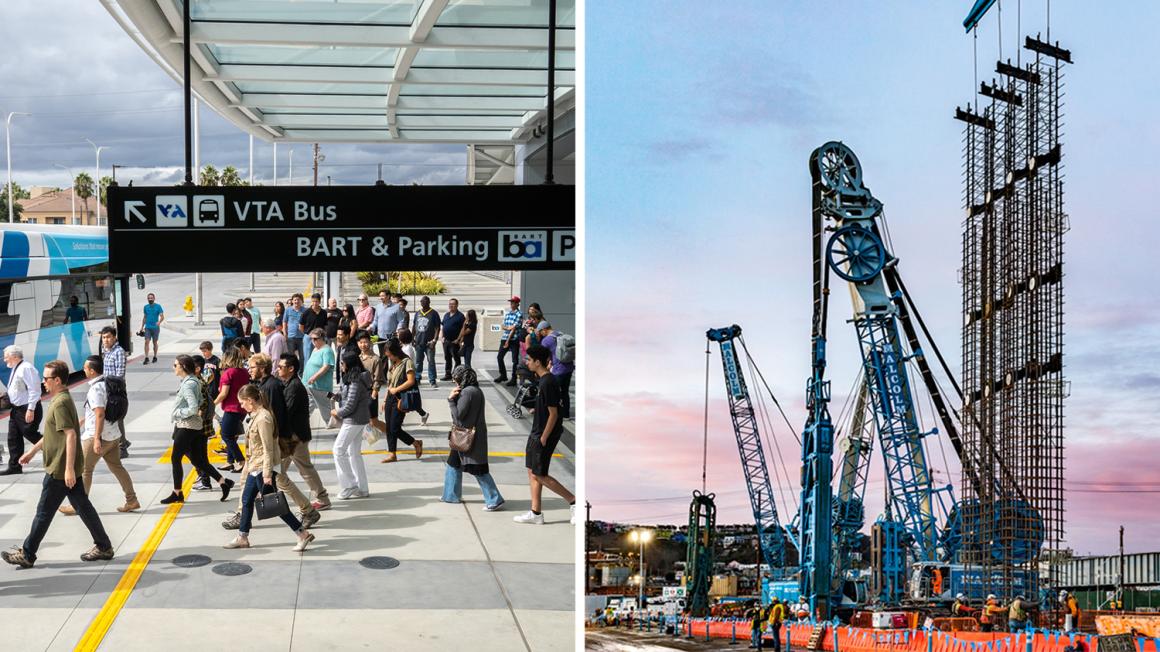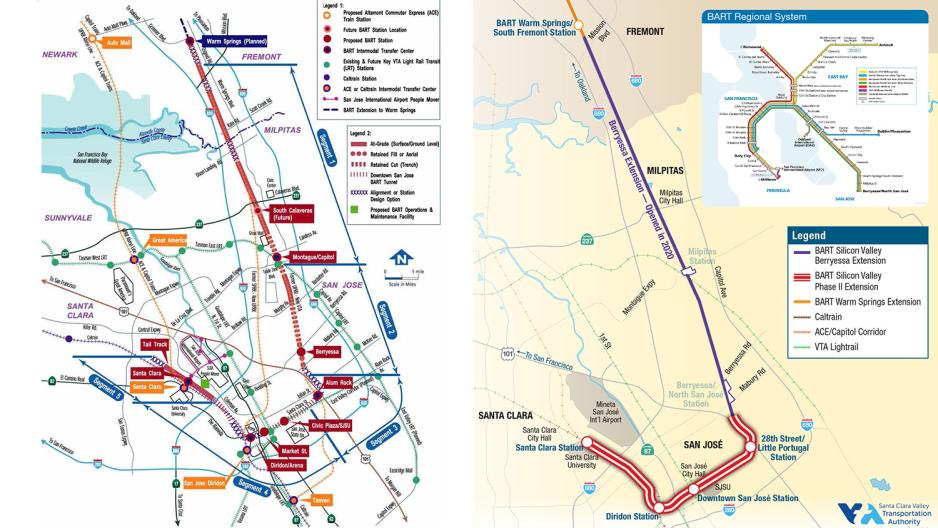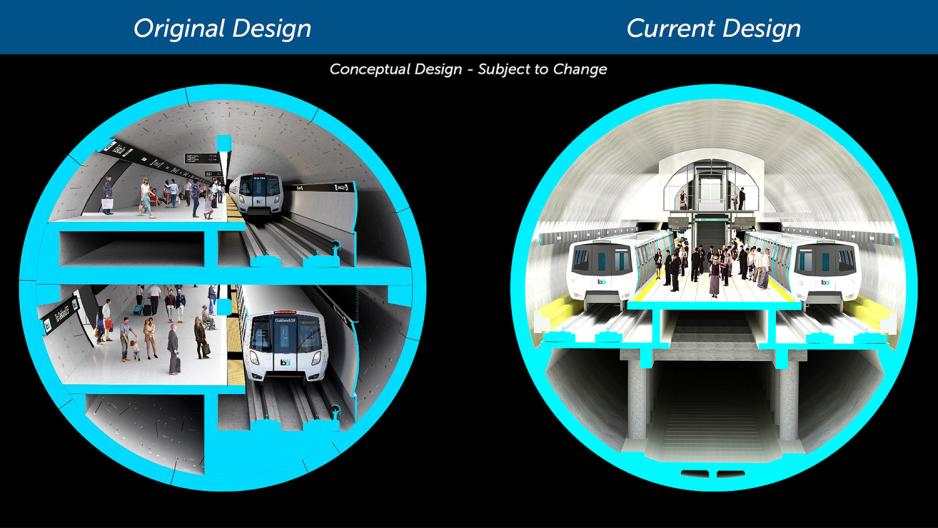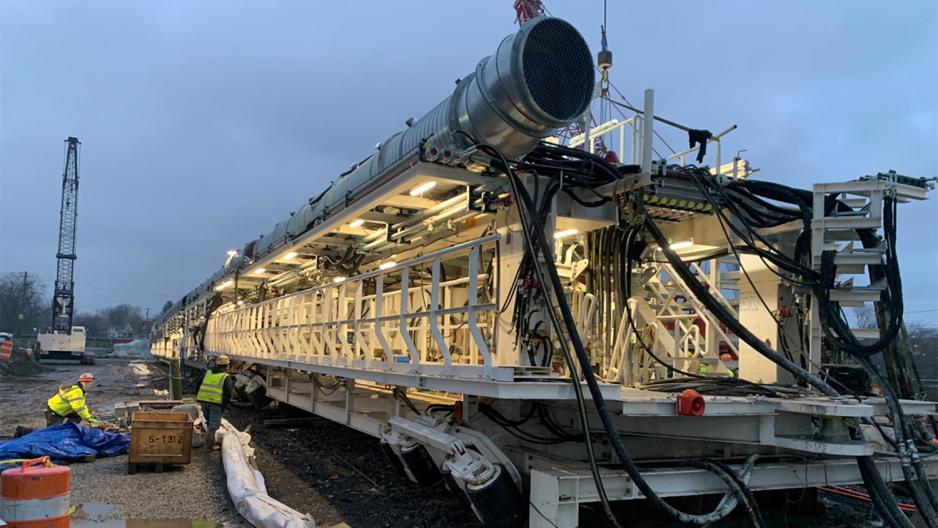VTA has been the lead agency responsible for the design, contracting, construction, and successful delivery of transit, mobility, and roadway transportation construction projects since 1976. This equals a total construction value of more than $6 billion dollars. The types of projects delivered include toll systems, heavy and light Erail systems and extensions, bus and bus rapid transit, highway, grade separations, pedestrian, and bicycle improvements.
VTA is currently working to complete delivery of the largest single public infrastructure project ever constructed in Santa Clara County, VTA's BART Silicon Valley Phase II Project (BSVII). BSVII will complete the 16-mile extension of BART regional rail service from Alameda County to Santa Clara County. The first 10-miles opened in June 2020, with stations in Milpitas and at Berryessa/North San Jose. Phase II, the completion phase, will extend BART service 6-miles into downtown San José and end in the City of Santa Clara.
The effort to bring BART into Santa Clara County has been decades in the making
When the BART District was formed in the 1960's, Santa Clara County opted out as it was believed joining would negatively impact the local economy. Faced with growing congestion along the I-880 and I-680 commute corridors, a Major Investment Study (MIS) was conducted in 2001, which confirmed the need for a transit alternative for those corridors and laid the groundwork to start the conceptual and environmental processes for the BART Silicon Valley Extension Program. The study evaluated 11 different combinations of transit alternatives and alignments. BART, utilizing the current project alignment, was identified as the best alternative, generating the highest projected ridership in the analysis. Just prior to the study and twice since then, extending BART into the heart of Silicon Valley has been supported by voters through local sales tax measures. This extension of the regional BART system will provide numerous benefits, including a fast and convenient transit alternative for major commute corridors, increased access to and from major employment and educational centers throughout the Bay Area, enhanced connectivity of regional transit services, promotion of economic development in the Silicon Valley, and improved mobility for transportation-disadvantaged populations.
Like all major infrastructure projects, this BART extension is a long-term investment that will meet long-term needs. As design and engineering advanced, in February 2009, the VTA Board decided to deliver the project in two phases. The first 10-mile phase would extend from Warm Springs in Fremont to Berryessa/North San José and the second 6-mile Phase would extend from Berryessa through downtown San José to Santa Clara. Phase I broke ground in April 2012 with major construction completed in 2019 and passenger service beginning in June 2020. In parallel with Phase I construction, planning efforts commenced for the Phase II Project which received environmental clearance in June 2018. Since then, VTA has continued to conduct technical work, advance design, prepare and award contracts, and collaborate with stakeholders while securing additional funding for the project.
Costs over project phases
The estimated costs of mega-capital projects often notably rise over the life cycle of the project, leaving taxpayers and stakeholders puzzled and concerned. However, it is not unusual and expected that a project’s initial cost projections, based on preliminary concepts, will differ from its ultimate established budget, based on advanced design and actual construction contracts. These early projected costs are simply estimates of the total cost of the project based on known information at the time (typically a lower level of design), projections of future economics, past experiences with similar projects, and current market conditions. A project budget is a fixed amount of money that has been allocated to a project. While there have been several costs estimates out in the public, the final BSVII project budget has not been established, as there are several steps still required before determining it. Projects have multiple phases, and after each one is completed, cost estimates become more and more defined and reliable.
The Planning Phase
During the planning phase, details about the project are often very limited. Even after conducting preliminary studies, feasibility assessments, and rough order of magnitude cost estimates, there is a considerable level of uncertainty about factors such as land acquisition costs, public reception, design changes, schedule, environmental considerations, and market conditions that can vary. The primary goal of the planning phase is to define the project and begin to understand its opportunities, risks, constraints, and resources.
The 2001 MIS included a very early estimate of total project costs for the 16-mile extension however, the study did not consider several key items, including the number and location of stations, the location of elevated or underground tracks, a comparison to the future airport people mover, and how freight rail maintenance could be accommodated in shared spaces.
Figure: 2004 BART Extension Alignment and Stations and 2023 Alignment Map
The Environmental Phase
Once a project is agreed upon, it must undergo a strict environmental assessment and clearance process. For a federally funded project like VTA’s BART Silicon Valley Program, this includes extensive review to comply with the National Environmental Policy Act (NEPA) in addition to state requirements of the California Environmental Quality Act (CEQA). This phase introduces new challenges as potential environmental impacts may warrant route changes, redesigns, or mitigation measures. Such alterations in the project scope typically result in additional costs as added studies and redesigns increase the complexity of the project or require new analysis.
For this project, there were four environmental documents certified and adopted between 2004 and 2018 that highlighted the evolution of the project in the almost 20 years since the alignment was first determined.
In 2009, when the VTA Board decided to split the project into two phases, there were still multiple options for the station locations for both Phase I and II. The 2018 environmental document included multiple station location options for just Phase II in addition to two tunneling methods. Throughout each of these environmental documents the project cost was reassessed along with the construction duration.
The Design Phase
As a project moves into the design phase, more detailed plans are developed, leading to a clearer understanding of stakeholder desires and implications of operator and construction requirements. When a project has a unique construction method, it can add to the amount of time and effort needed to design the project or educate decisionmakers on how to best complete the project. However, this also reveals unforeseen challenges that were unknown during the planning and environmental phases such as engineering challenges, constructability issues, real estate changes, and updated requirements and regulations. Addressing these challenges often requires changes to the cost and schedule.
VTA’s BSV design teams have spent considerable time analyzing the specific features and conditions of the alignment, station locations, and construction methodologies. Additionally, stakeholder input has provided valuable insight into conditions, modifications, and improvements that influence the design. As new technologies and information become available, they are incorporated as appropriate into the overall project design.
In 2022, VTA explored and analyzed dozens of design alternatives through an innovative process to deliver the project more efficiently. These innovations took into consideration the cost and construction timeline, as well as safety, operations and maintenance, and the passenger experience. This resulted in a shift from stacked boarding platforms to center-boarding platforms, providing access to tracks in both directions at the three underground stations. This design also improved the passenger experience by reducing the number of escalators between the station entrance and platforms.
Figure: 2023 Innovation for Platforms within the Tunnel
Escalation in Construction Costs
Construction costs vary from year to year for a variety of reasons. In recent years, construction costs have increased at an astounding rate. As VTA has brought on the first construction contractor for the project, it has started to see market fluctuations that require modifications to the cost estimate.
- Labor and Material Costs: Increased demand for construction materials and labor, results in higher prices. Additionally, specialized skills required for transit and tunneling projects can also incur premium wages. Contractors are pricing projects in reaction to these higher costs.
- Accounting for Risks: Geopolitical events, natural disasters, or unforeseen challenges during construction can lead to cost escalations that must be accounted for and added to the budget.
- Inflation: The overall increase in prices reduces the purchasing power of an agency. While inflation has slowed down in June 2023 to only 3 percent, the construction industry was at 9.5 percent just a year ago in June 2022.
- Year of Expenditure (YOE): This is the project cost adjusted for inflation from the present time to the expected period of construction. For multi-decade projects, this will result in significantly higher number from the planning stage to the first year of construction to the final years of construction. Even if nothing changes, this number will be higher based on the value of money over time.
It is important for a mega-project to be transparent and realistic about the changing projected costs of the project through each stage of development. This allows decision makers to review the return on investment and opportunities when reviewing the benefits of a project. As projects progress through planning, environmental, and design phases, a clearer picture emerges, but it also exposes new complexities that impact the budget. To tackle these challenges, VTA has developed planning and risk assessments, engaged in ongoing stakeholder outreach, and explored innovative construction methods.



